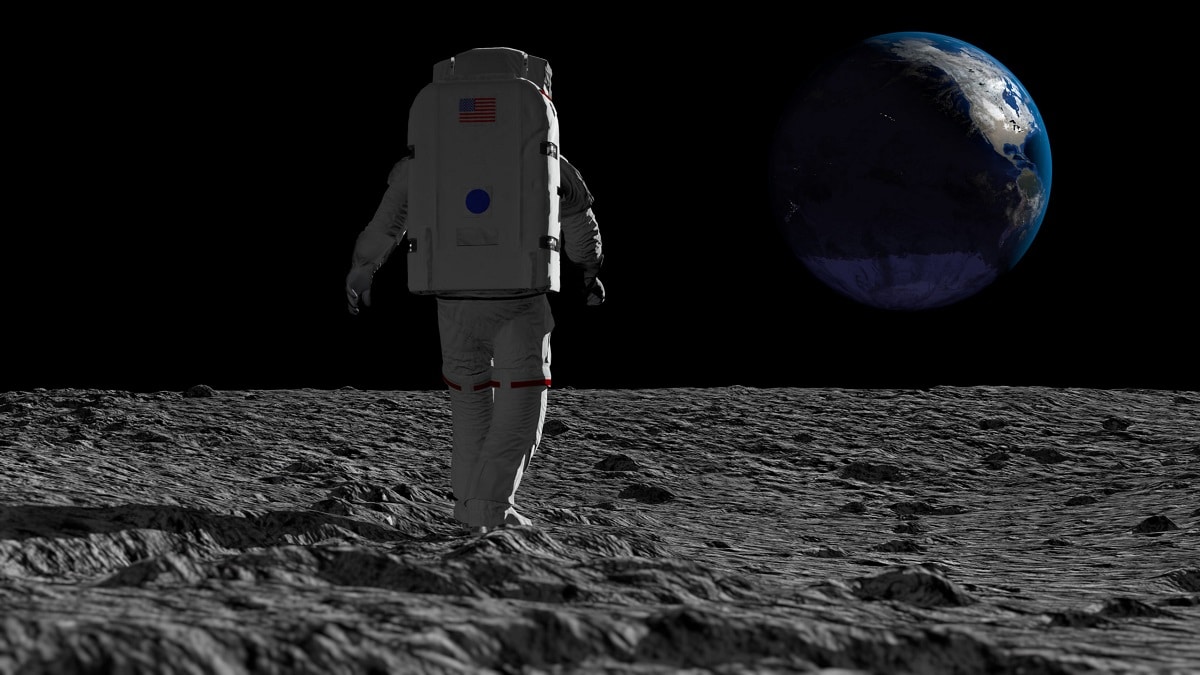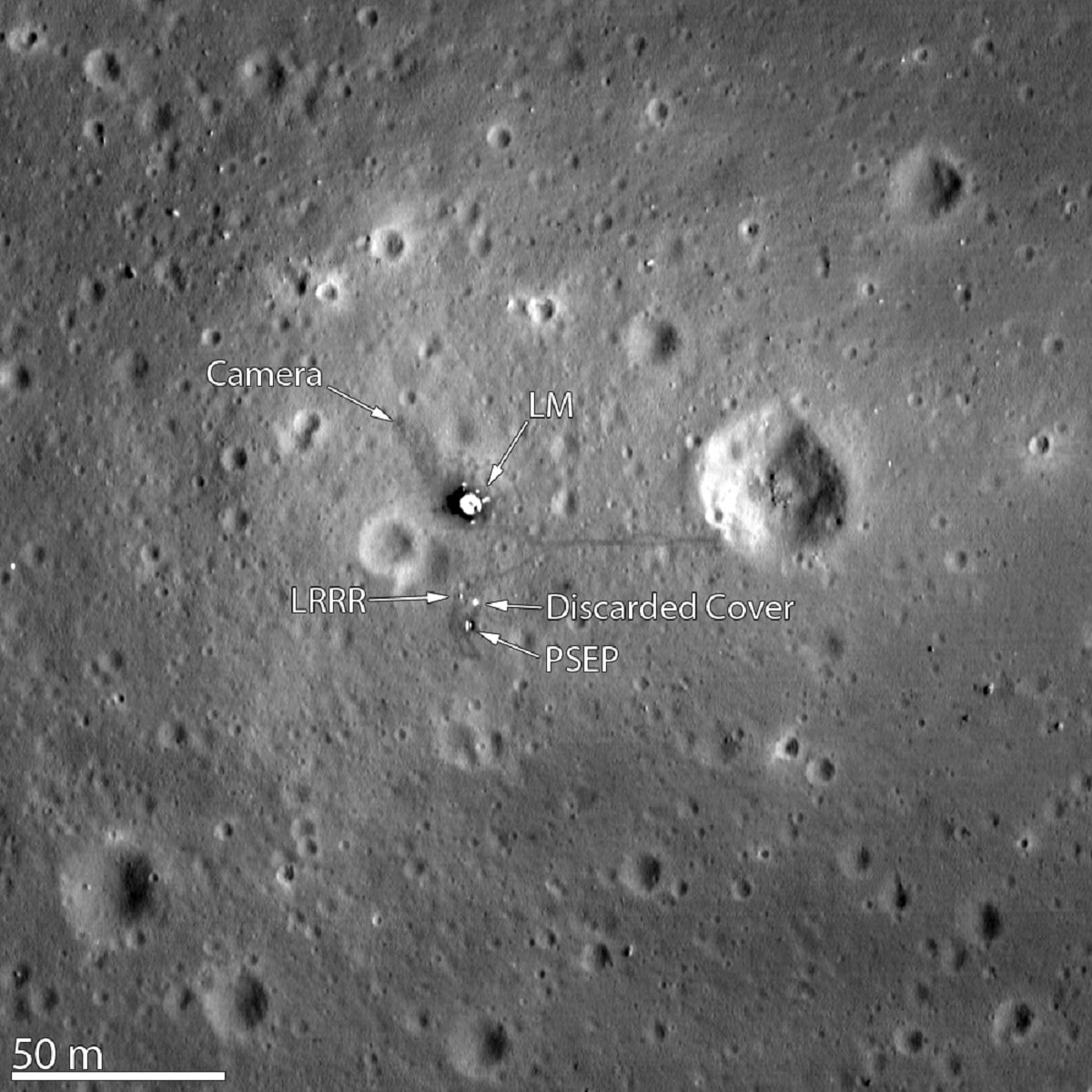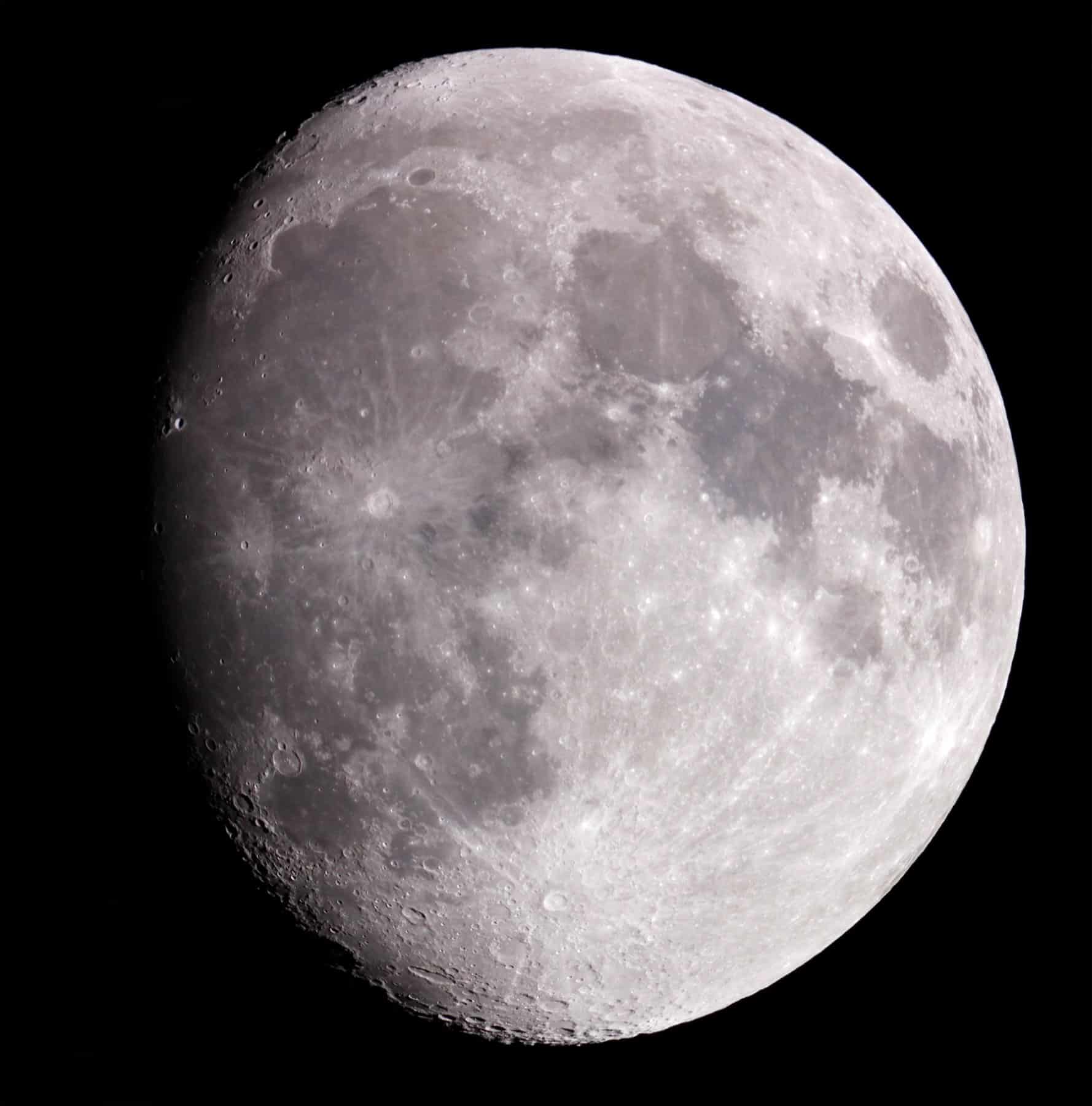
El Sea of Tranquility It is a large area of the moon. Although it is known by the name of the sea, it is not exactly an area full of water. It is the place where the lunar module of the Apollo 11 ship landed. The specific place where it landed was known as Tranquility Base.
In this article we are going to tell you everything you need to know about the Sea of Tranquility, its characteristics, origin of the name and much more.
What is the Sea of Tranquility?

Actually, the Sea of Tranquility is not a sea of water like the ones we have here on Earth. It is rather a very large plain found on the surface of the Moon, our natural satellite. This plain is located at the top of the Moon and is visible from Earth with the help of telescopes. The name is due to its appearance, since it looks like a flat and smooth area compared to other mountainous and rugged areas on the Moon.
This area is important because it was the place where the human being stepped on the Moon for the first time. In 1969, NASA's Apollo 11 mission landed on this lunar plain and astronauts Neil Armstrong and Edwin Buzz Aldrin walked on its surface. It was a historic moment that marked a milestone in space exploration.
In addition to being the site of the first human moon landing, the Sea of Tranquility has been the subject of several scientific studies and space explorations. Scientists have analyzed the rocks and soil of this lunar plain to learn more about the history of the Moon and its formation.
Several robotic missions have also been carried out to the Sea of Tranquility region. In 2013, for example, China's Chang'e 3 spacecraft landed on this lunar plain and deployed a rover to explore the surface. Other countries have also sent missions to study this area, including the United States, Russia, and Japan.
In addition to its scientific importance, it is also a place of historical and cultural interest. The footprints left by astronauts on its surface are considered a monument of space exploration and have been protected as historical heritage.
Why did Apollo 11 land here?

Apollo 11 landed in the Sea of Tranquility for several reasons. First, the scientists wanted to choose a landing site that had a flat and smooth enough surface for the spacecraft to land safely. The plain of the Sea of Tranquility it was one of the flattest and smoothest areas on the Moon, which made it a good choice for landing.
In addition, the scientists also wanted to choose a location that had interesting and potentially important terrain for scientific research. This terrain had previously been imaged by unmanned spacecraft and was known to have a similar composition to other areas on the Moon. Therefore, the scientists thought it would be a good place to collect samples and study the composition of the lunar soil.
Finally, there was also a question of security. If something went wrong during the landing, astronauts could try to land in an area close to the plain that also had a sufficiently flat and smooth surface.
Moon Morphology
The Moon has a very different morphology from Earth. Instead of having oceans, mountains, and continents like Earth, the Moon is mostly one large, lifeless rock. The Moon's surface is covered with craters, mountains, plains, and valleys. Craters are circular formations that are created when asteroids and other objects impact the lunar surface. Mountains and mountain ranges are rock formations that rise above the surface. The plains are flat, smooth areas, like the Sea of Tranquility. Valleys are depressed areas on the lunar surface.
The Moon also has some unique features that make it different from Earth. For example, it has a very dusty and static surface, which means that objects do not move as easily as on Earth. It also lacks a dense atmosphere, which means that there is no weather, no wind, no rain on the Moon.
Origin of the name of Sea of Tranquility
The name Sea of Tranquility was given to this lunar plain by the first astronomers to observe it through telescopes on Earth. The region appears quite flat and smooth, and early astronomers thought it resembled a calm water surface.
This name dates back to the 11th century, when the Italian astronomer Giovanni Riccioli named this region "Mare Tranquillitatis" on his lunar map. Since then, the name Sea of Tranquility has been used to refer to this lunar plain, and was the official name given to it when the Apollo 1969 mission landed there in XNUMX.
It is interesting to note that although the name suggests that it is a body of water, there is actually no water on the Moon.
Moon landing in the Sea of Tranquility

The first landing on the Moon was made by the Apollo 11 mission in 1969. It was a historic milestone for humanity, since it was the first time that a human being set foot on another world. The landing was made by astronauts Neil Armstrong and Edwin Buzz Aldrin. After the lunar module, named "Eagle", undocked from the command module in lunar orbit, Armstrong took control and began to guide the craft towards the Sea of Tranquility, where the landing site had been selected.
The landing process was very complex and required a great deal of precision. Armstrong had to guide the ship slowly to the surface, maintaining a constant speed and making sure the ship landed in a safe and stable position. All of this had to be done with limited fuel time and while maintaining constant communication with the crew on Earth.
Finally, after a few tense moments, Armstrong announced: "The Eagle has landed". It was an exciting time for the whole world, as humanity had reached a historic milestone. Armstrong and Aldrin left the lunar module to explore the lunar surface and collect rock samples. They spent several hours on the Moon before returning to the lunar module and rejoining Michael Collins, who was orbiting the Moon in the command module.
I hope that with this information you can learn more about the Sea of Tranquility and its characteristics.